My beautiful Croatia! - NEW ARTICLE IS COMING THIS WEEK
 •
by
•
by dRobi1990

Dear readers, this is not the Fool`s day article.
First of all, I want you to forgive me for not writing articles I promised. More than 3 years have passed since the first article.
This week you will be able to read the 12th part of My Beautiful Croatia! series.
It will be beautiful, of course, so be prepared and wait for the precious moments of divine Croatia, one of the most beautiful countries in the world.
Again, thanks for reading, voting and subbing past articles.
My goal is to make 50 articles about our small country and show the world all the beauty Croatia has. I`ll do my best to show you Croatia most honestly and with great honour.
In this article I will remind you of some places, cities, heritage, people and cuisine already mentioned.
Article will be divided in 7 sections: nature, cities, culture, architecture, animals, sports and cuisine.
Enjoy!
Notice: These article is only made to promote Croatia and Croatian nature, culture, cities, heritage, history, art, cuisine, sports and people (either born in Croatia or others) and is not made to usurp, tease or start any sort of controversy, so please have this on your mind when you post comment.


Previous articles: 1 2 3 4 5 6 7 8 9 10
note that some photos in old articles are missing (I apologize for that)
Do you know where is Croatia situated? Well, look at the map:

N A T U R E
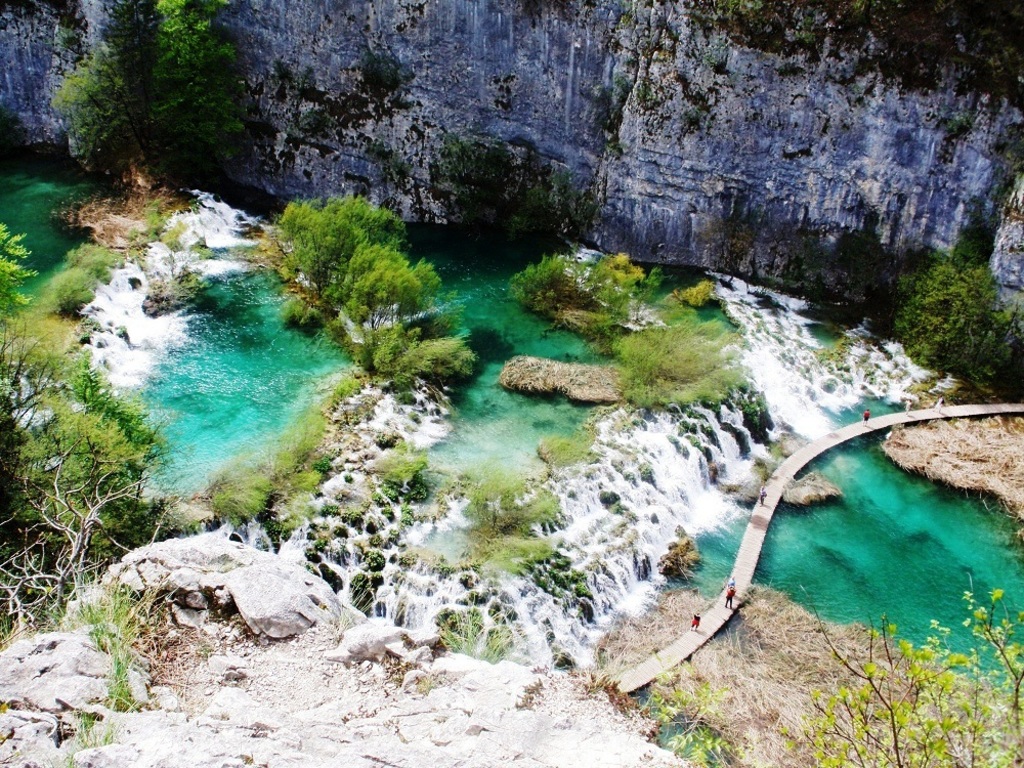
Plitvice Lakes National Park, Croatia's first National park established in 1949 covers 296 square km of breathtaking natural splendor becoming with it the largest among the eight national parks of the country.
The park was inscribed on the UNESCO World Heritage List, in 1979., in recognition of its "outstanding natural beauty and undisturbed production of travertine (tufa) through chemical and biological action".
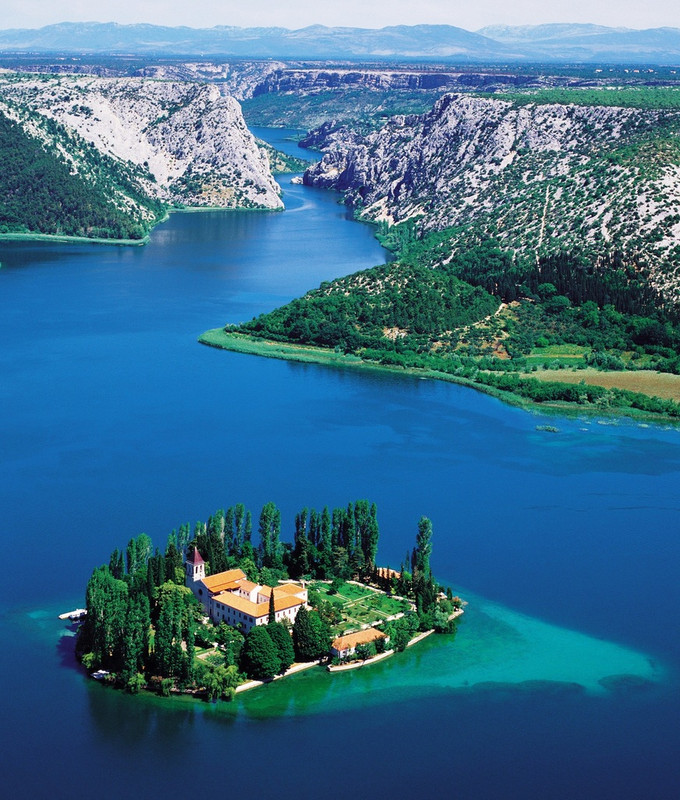
Visovac Island is the cultural pearl of the Krka National Park, an island of peace and prayer, framed into extraordinary horticultural environment. There is a Church of Our Lady of Visovac and Roman Catholic Visovac monastery that treasures rich artistic, historical and archaeological collections.

Famous for their scenic beauty, The Brijuni Islands are a holiday resort and a National Park (declared in 1983).
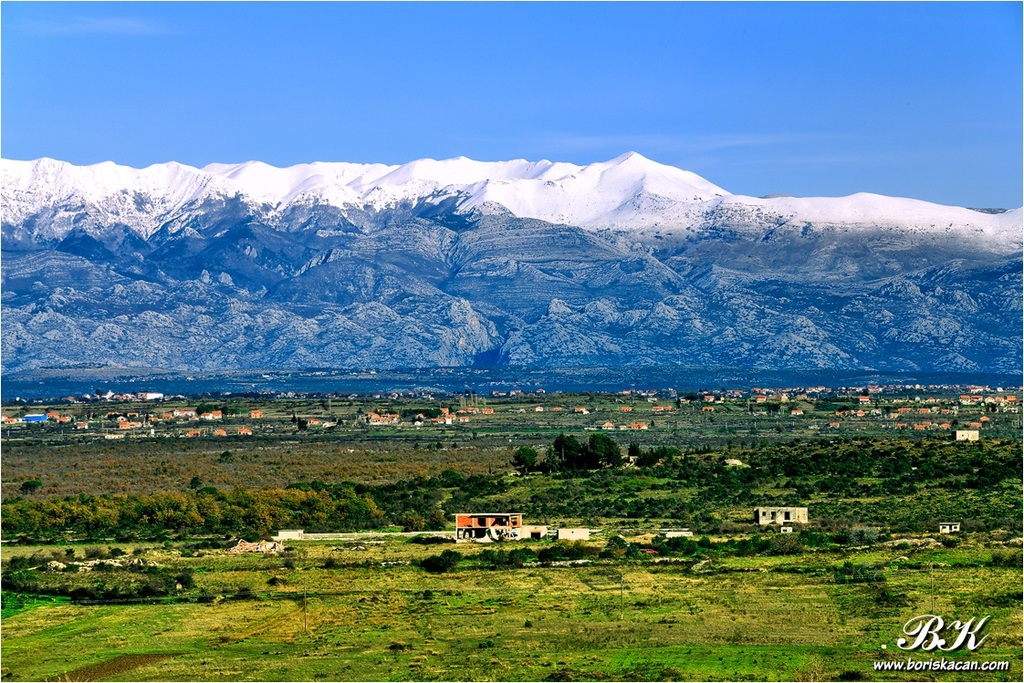
Velebit is the largest though not the highest mountain range in Croatia. Its highest peak is the Vaganski vrh at 1757 m.
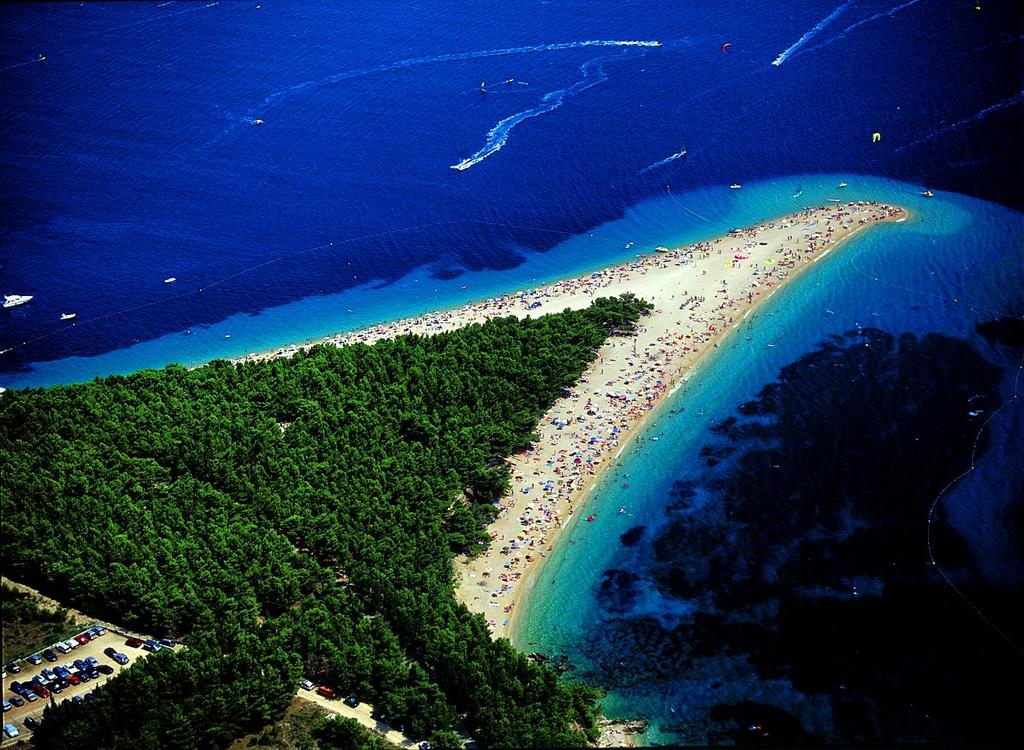
Zlatni Rat (Golden Cape) is a narrow white pebble beach on a promontory near
Bol, located 2 km west of Bol harbour, on the southern coast of the island of Brač (the island has a population of 13,000)

Galešnjak island (also called Island of Love) is located in the the Adriatic sea, between the islands of Pašman and the town of Turanj in Zadar County
It is one of the worlds few naturally occurring heart-shaped objects.

Kosinj is for Croatian culture and history certainly the most important as a possible place of publication of the first Croatian book, Kosinj Missale Romanum Glagolitice, in 1483, which was printed in the mobile printing house of noblemen Anž Frankopan.
The Kosinj valley is full of beautiful caves (Cave park Grabovača), pot-holes and other karst forms.
C I T I E S
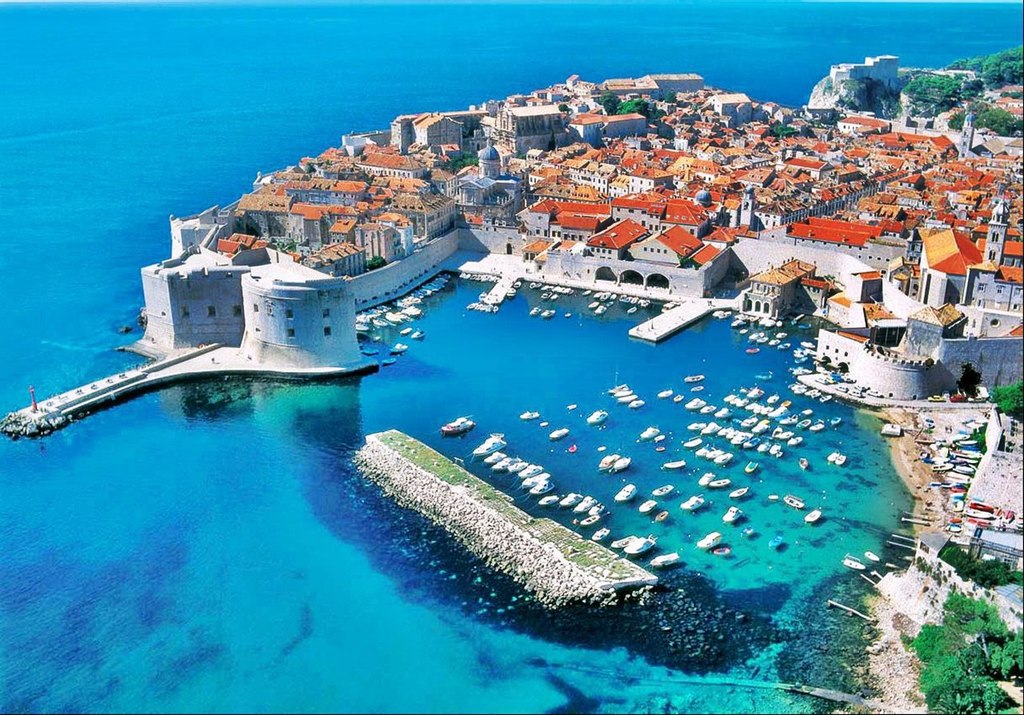
Dubrovnik is a Croatian city on the Adriatic Sea coast, positioned at the terminal end of the Isthmus of Dubrovnik, with a population of 42,641.
It is one of the most prominent tourist destinations on the Adriatic, a seaport and the centre of Dubrovnik-Neretva county.
In 1979, the city of Dubrovnik joined the UNESCO list of World Heritage Sites.
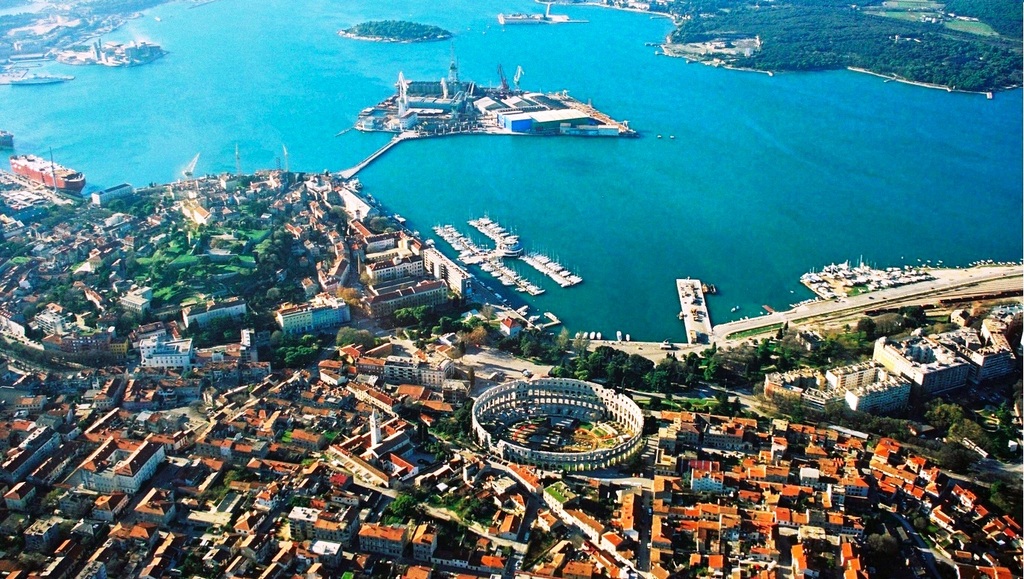
The Pula Arena is the name of the amphitheatre located in Pula, Croatia.
Pula Arena was constructed in 27 BC - 68 AD and is among the six largest surviving Roman arenas in the World.
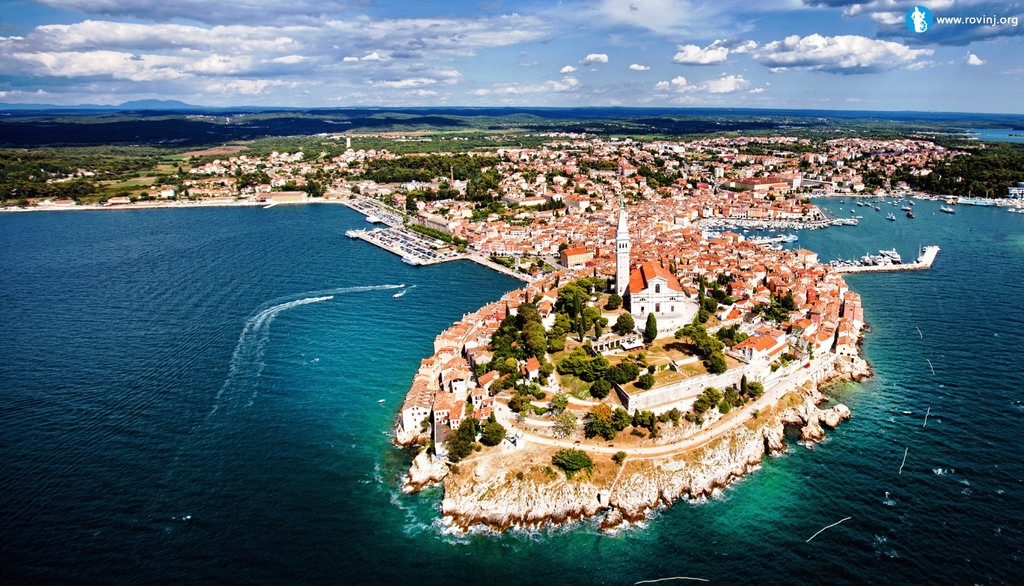
Rovinj (Italian: Rovigno) is a city in Croatia situated on the north Adriatic Sea with a population of 13,562.
Rovinj is considered to be one of the most beautiful towns on the Croatian coast because of its unique appearance and its wonderful natural surroundings.

Surrounded by the towers and walls, which are, next to the geographical location, emphasizing the role of the town of Korčula, a city seen from afar - as a fortress.
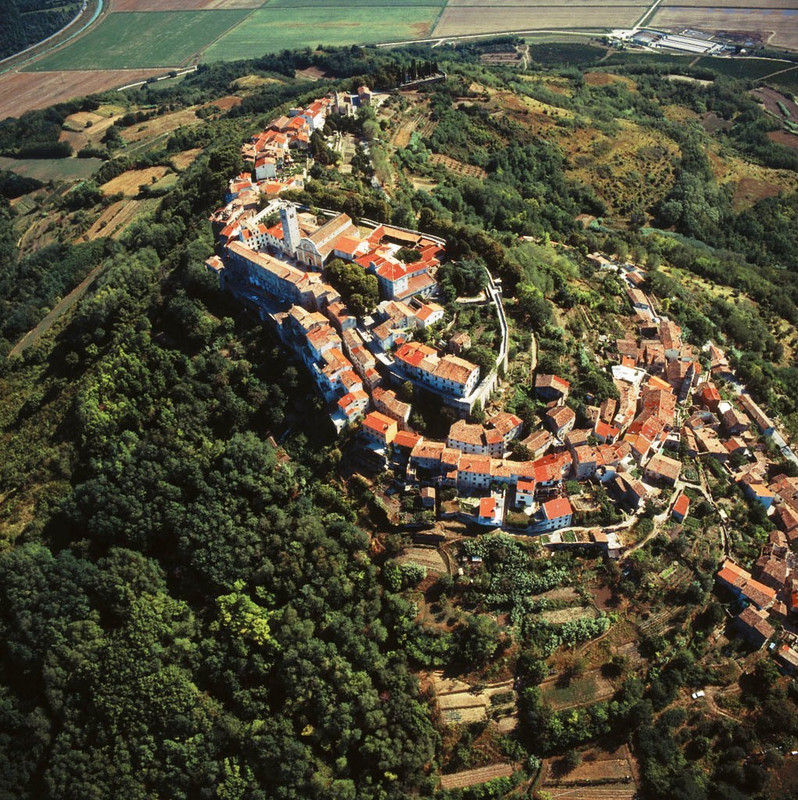
Motovun is a medieval town that grew up on the site of an ancient city called Kastelijer. It is situated on a hill 270 metres (886 feet) above sea level with houses scattered all over the hill.
The legend of Veli Jože - Motovun is known among today's population of Istria as the city of Veli Jože, the good gentle giant who represents the Croatian people of Istria in the national struggles for equality with the politically dominant ethnic German and Italian community (1900-1914)
C U L T U R E
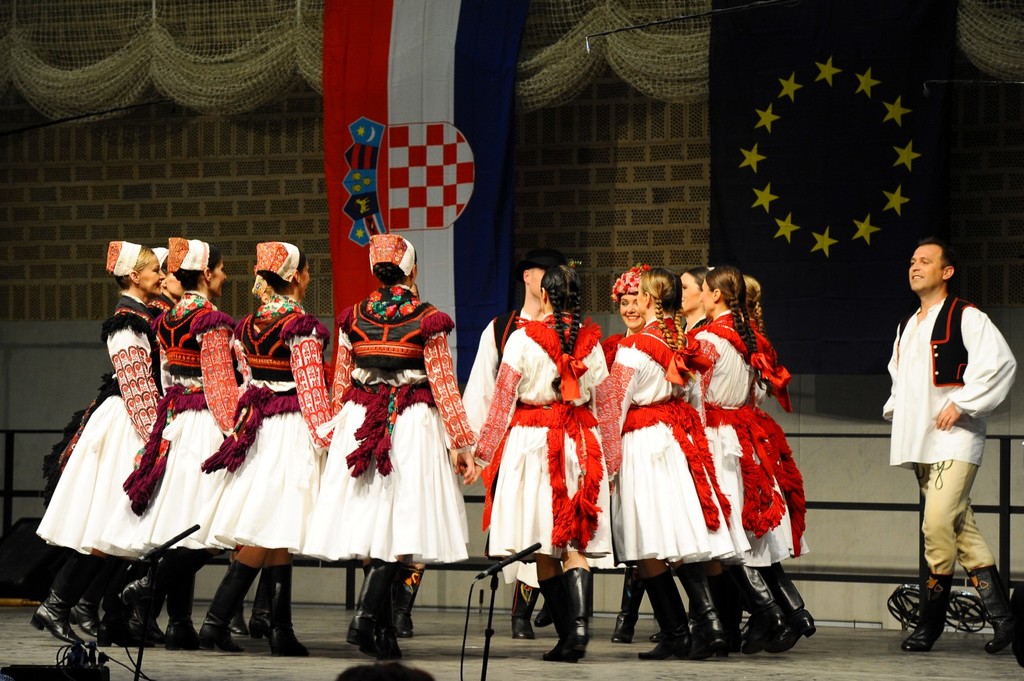
LADO, the National Folk Dance Ensemble of Croatia, was founded in 1949 in Zagreb as a professional national ensemble, with the aim of researching, artistically interpreting and presenting on stage the most beautiful examples of the rich traditions of Croatian music and dance.
Ensemble LADO is often called a "Dancing Museum" because of priceless and beautiful authentic national costumes (more than 1,200 costumes) some of which are 100 years old.

Pisanica (Croatian) (pl. pisanice) is a decorated Croatian Easter egg that comes from an old Slavic custom dating back to pagan times.

Moreška is a traditional sword dance from the town of Korčula, on the Croatian island of the same name in the Adriatic.
Dating back to 17th century, the Moreška is an elaborate production involving two groups of dancers, engaging in a mock battle over the fate of a veiled young woman.
Originally performed rarely on special occasions, in modern times the Moreška is performed weekly for visiting tourists.
A R C H I T E C T U R E
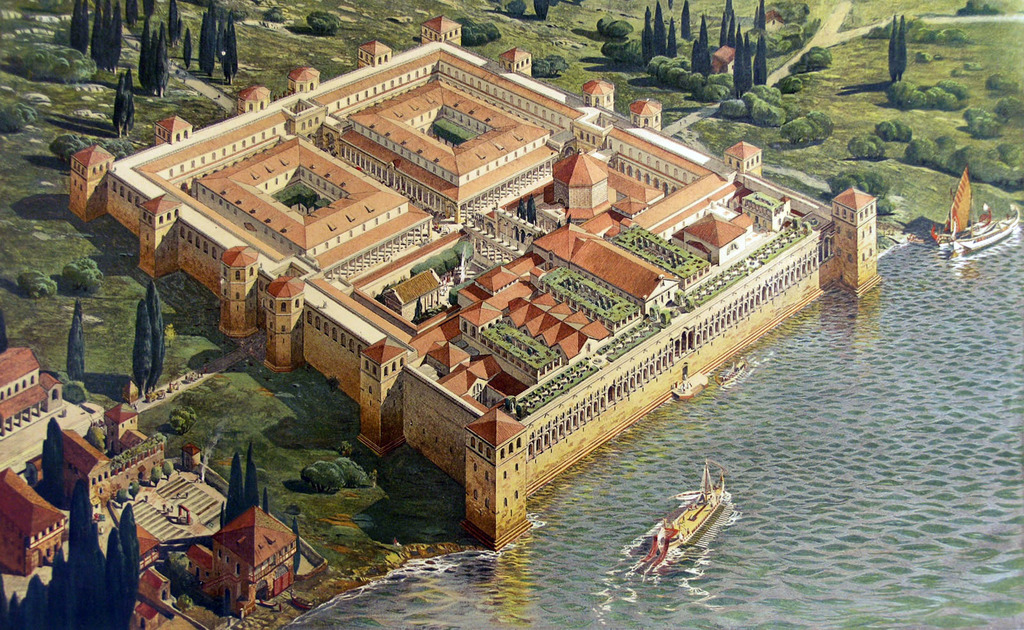
Diocletian's Palace (Croatian: Dioklecijanova palača) is a building in Split, Croatia, that was built by the Roman emperor Diocletian at the turn of the 4th century AD.
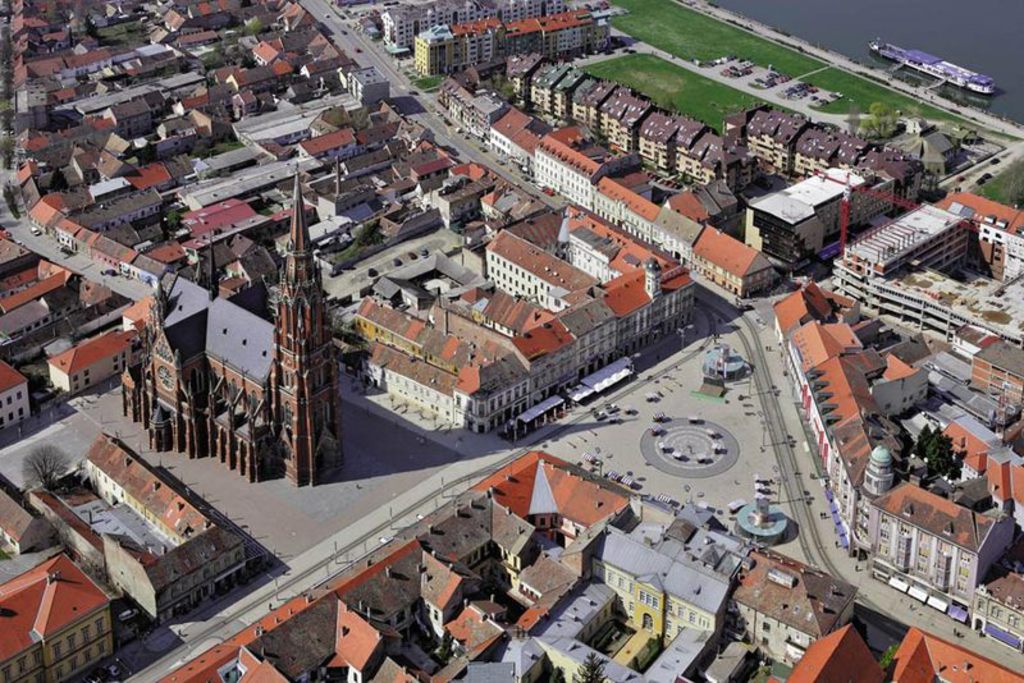
Osijek Co-cathedral dominates the whole city centre of the town and could be seen from the far distance. It is the tallest building in Osijek.
The co-cathedral of St Peter and St Paul was built in 1898, during period of Austro-Hungarian rule in Slavonija.
The multi-tiered 90-metre spire is one of the city's landmarks. The church was built in 1898 on the initiative of Đakovo-based Bishop Josip Juraj Strossmayer.

The town-castle Stara Sušica of the Frankopan family has been turned in the resort.
Castle was built by Frankopan noble family.
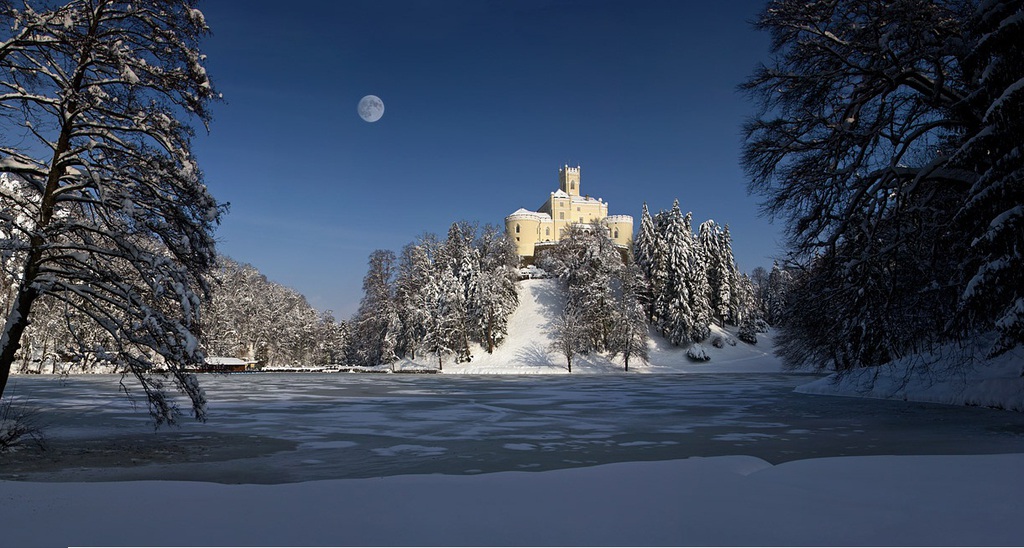
Trakošćan Castle (Croatian: Dvorac Trakošćan) is a castle located in northern Croatia (Varazdin County) that dates back to the 13th century (first written mention is in 1334).
For several centuries, it used to be a fortification, so that the reconstructions undertaken during that period were functional rather than aesthetic.
The castle itself reveals different phases of building.
It has been maintained for years and is currently one of the best preserved historic buildings in the Crotia.
A N I M A L S

Clockwise: Seahorse, Loggerhead sea turtle, Red deer, Griffon vulture, Boškarin - Istrian cattle, Brown bear, Olm, White stork, Posavac horse , Turopolje pig,
in the middle: Mediterranean monk seal
S P O R T S

Clockwise: Goran Ivanišević, Dražen Petrović, Croatian national football team, Croatian national handball team and Janica Kostelić with her brother Ivica Kostelić
C U I S I N E

Clockwise: Dalmatinska pašticada - a stewed beef dish, Čvarci, Pršut (Prosciutto), Zagorski Štrukli and Kulen sausage




Comments
v
Greetings from Bulgaria, my Horvat friends!
Ustasa & IMRO forever o7
lol
vote 🙂
wow... so lovely...
v
Jedna greska ova slika sa katedralon nije iz djakova nego iz osijeka .
Djakovo nema rijeku toliko veliku sto se vidi u desnom kutu slike
I jedan minus di su imotska jezera
Potkrala mi se greška budući da sam sastavljao ovo sinoć u 2 sata.
Nema tu minusa 🙂 imotska jezera možeš naći u 7. članku.
Nažalost, slike Modrog i Crvenog jezera su izbrisane sa imageshacka. Možda ponovno objavim svih 11 članaka budući da se stari ne mogu editirat.
Sve 5 clanak za 5
Hrvatska je toliko lijepa zemlja, fakat smo sretni jer živimo u njoj.
vote!
odlicno
btw ova katedrala a i izgled svega vuce na Osijek, stovise uvjeren sam da je to Osijek jer zivim tu
Osijek je . Ja san kratko zivio pa znan
Ma Osijek je, dogodi se pogreška. 🙂
skonto sam da je lapsus neki al moram mal zajebavat 😃
Vote, sub, endorse.
v
Glas, naravno.
odlican članak,vote a sub odavno
cool!
Bravo
di je split i poljud a ?????????
cccccccc nema vote!
(osim dioklecijanove palace)
Da si pratio stare članke, vidio bi ga 😉
A svrha ovog članka nije to što misliš.
a sv Donat
nema vote
sve je ovo lijepo divno krasno, al kad vec svi govore di je ovo di je ono, ja cu rec ono najbitnije
NEMA SISA NEMA VOTE
Jest da sam Srbin al stvarno imate najlepse more i obalu, bio sam 3 puta u Hrvatskoj na moru, u Puli, u Porecu i stvarno nisam imao nikakvih problema i super sam se proveo, jedino sam u Splitu imao mali incident. More za svaku pohvalu.
u split ti je trenutno bolje doć sa bg registracijom nego sa zg 😃
zg = bg 😃
V
v
v+e
čim je kulen tu, evo ga i vote 😃 \\o//
v+
v+e
[removed]
Evo nam ostojića i registarskih pločica!
http://tinyurl.com/pprvuzq
My beautiful Croatia!
http://tinyurl.com/c2dhoxj
Slike ide super uz glazbenu podlogu:
https://www.youtube.com/watch?v=M0ZqVin-wiI
Malo sam ljut na državu danas!
svi smo, ali toga imas bas svugdi po svitu, ponajvise u bogatin amerikama itd....nažalost nije svojstveno samo nama 🙁
havent i seen this somewhere before?
"In this article I will remind you of some places, cities, heritage, people and cuisine already mentioned."
[removed]
Such nice views. I will visit B&H and Albania this may and surely want to visit Croatia too in early future🙂
Pozdrav iz Turska o/
v+s
v 🙂
v
Svaka čast na artiklu za 5...preljepa nam zemlja a kvare nam sliku lopovi političari. ..
Kmeee
Vote ko kuca, ubaci i Sinj, Cetinu, Alku i Veliku Gospu🙂
Vote🙂
Hail Goran Ivanišević, first ever pro tennis player forced to retire from a match because he broke all his tennis rackets xD
bozanstveno 🙂